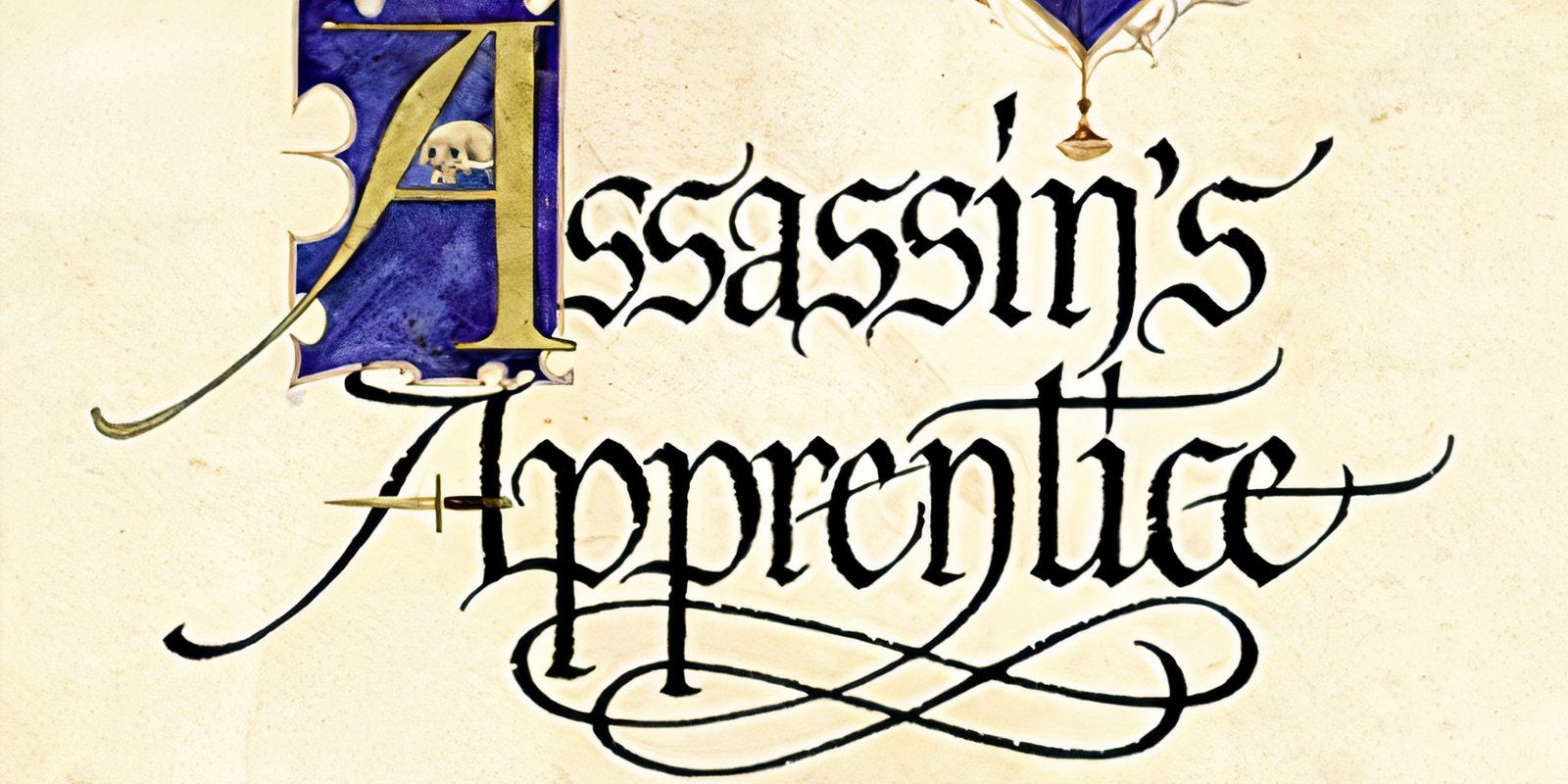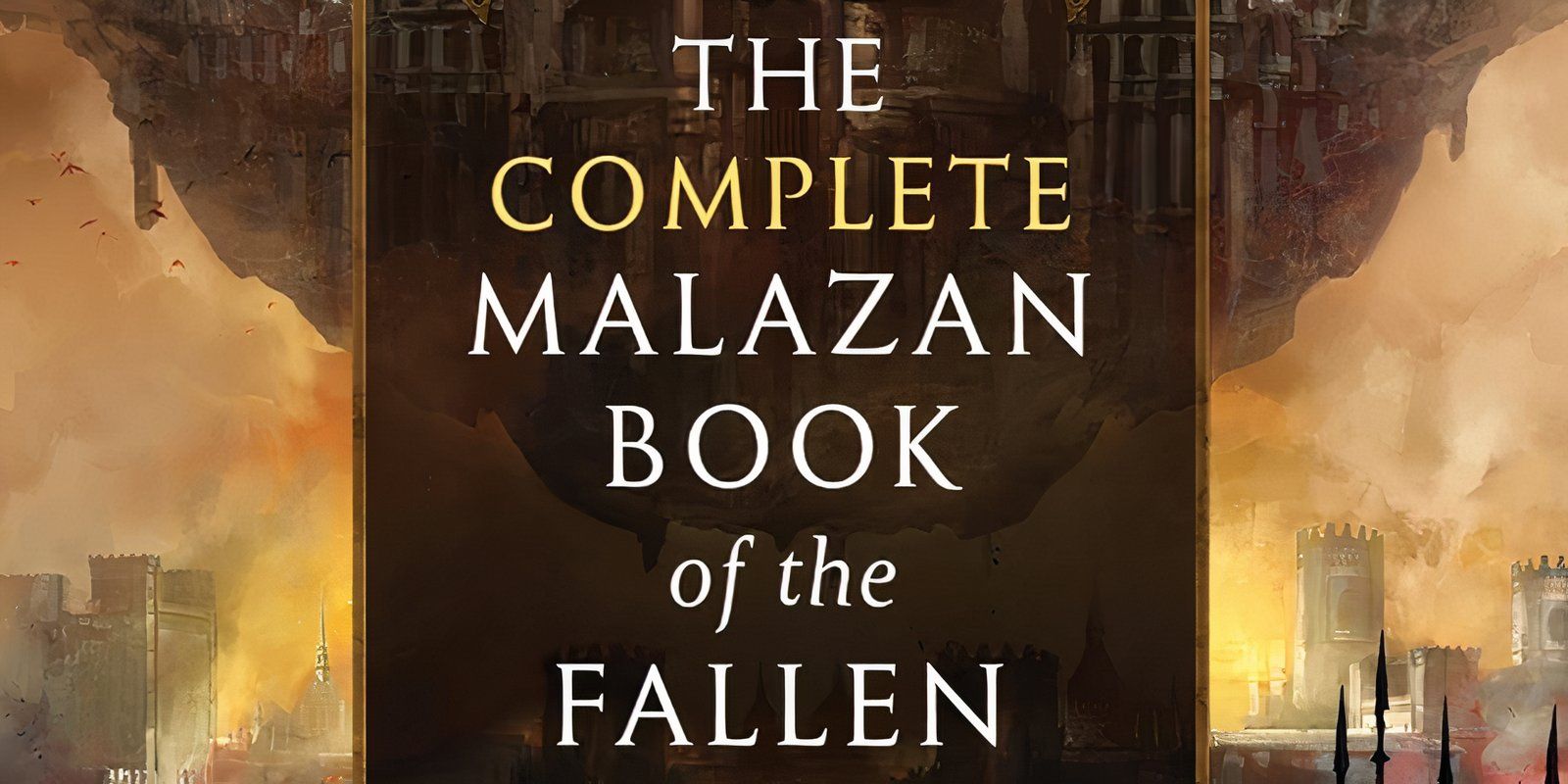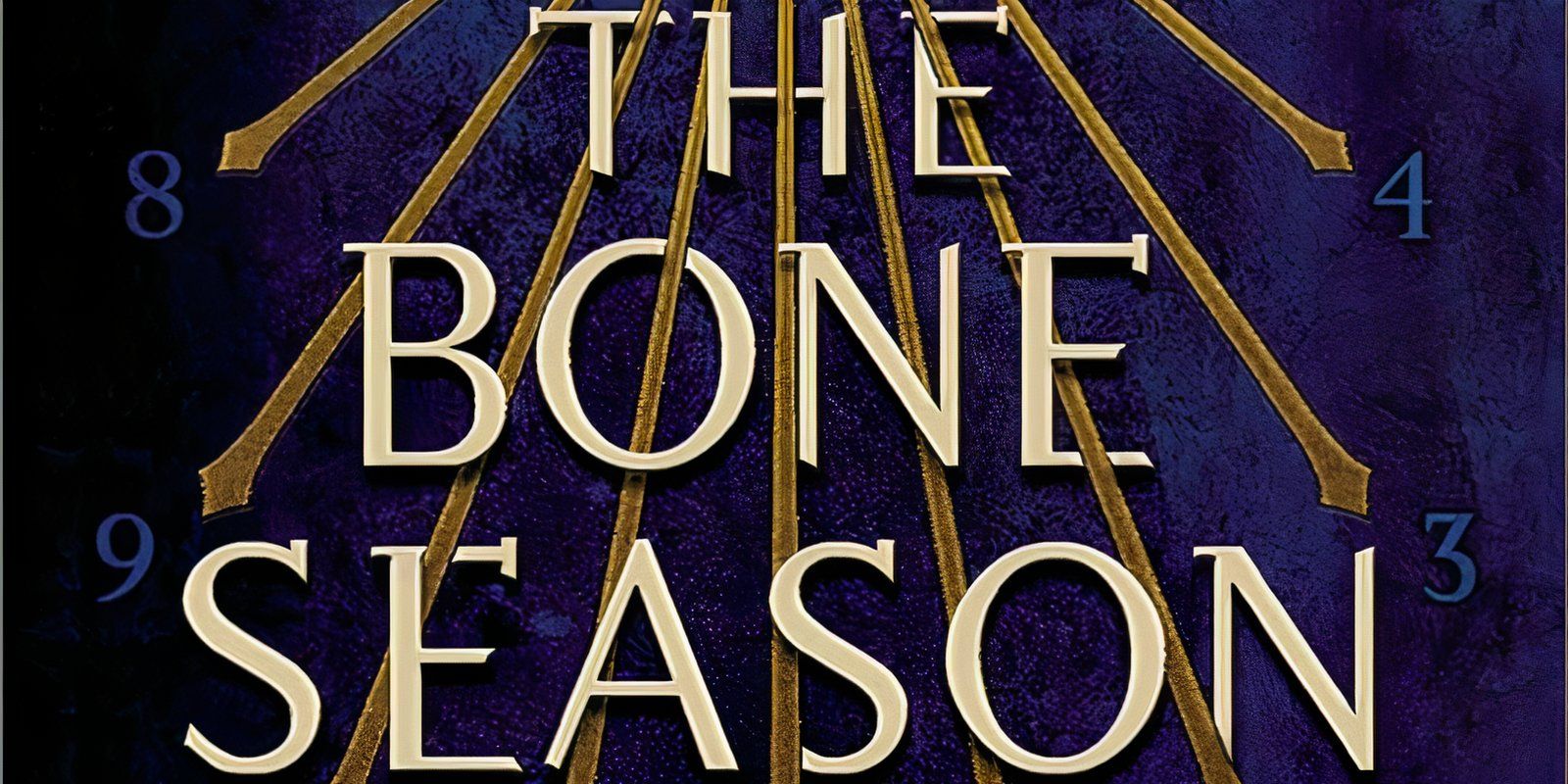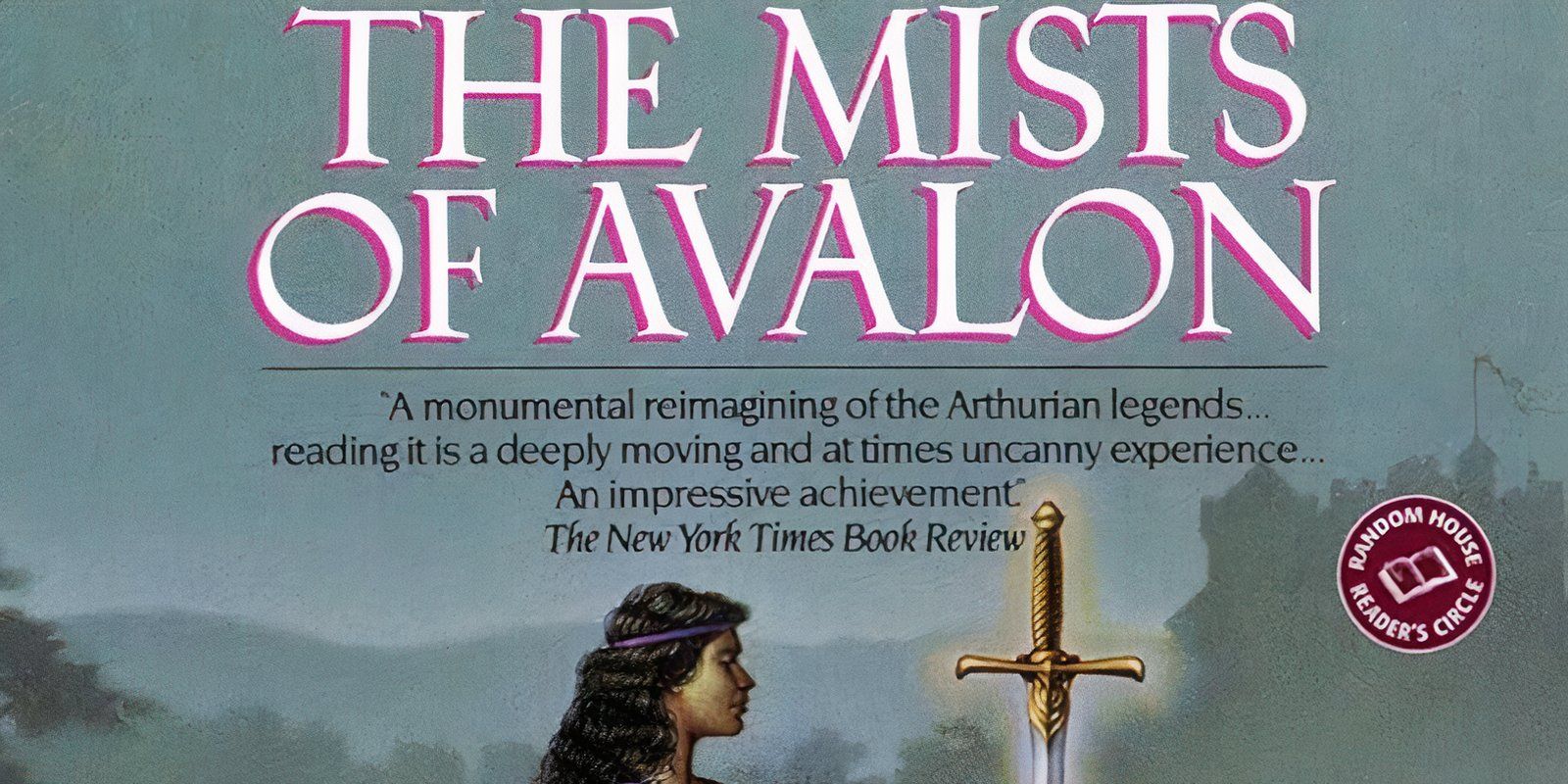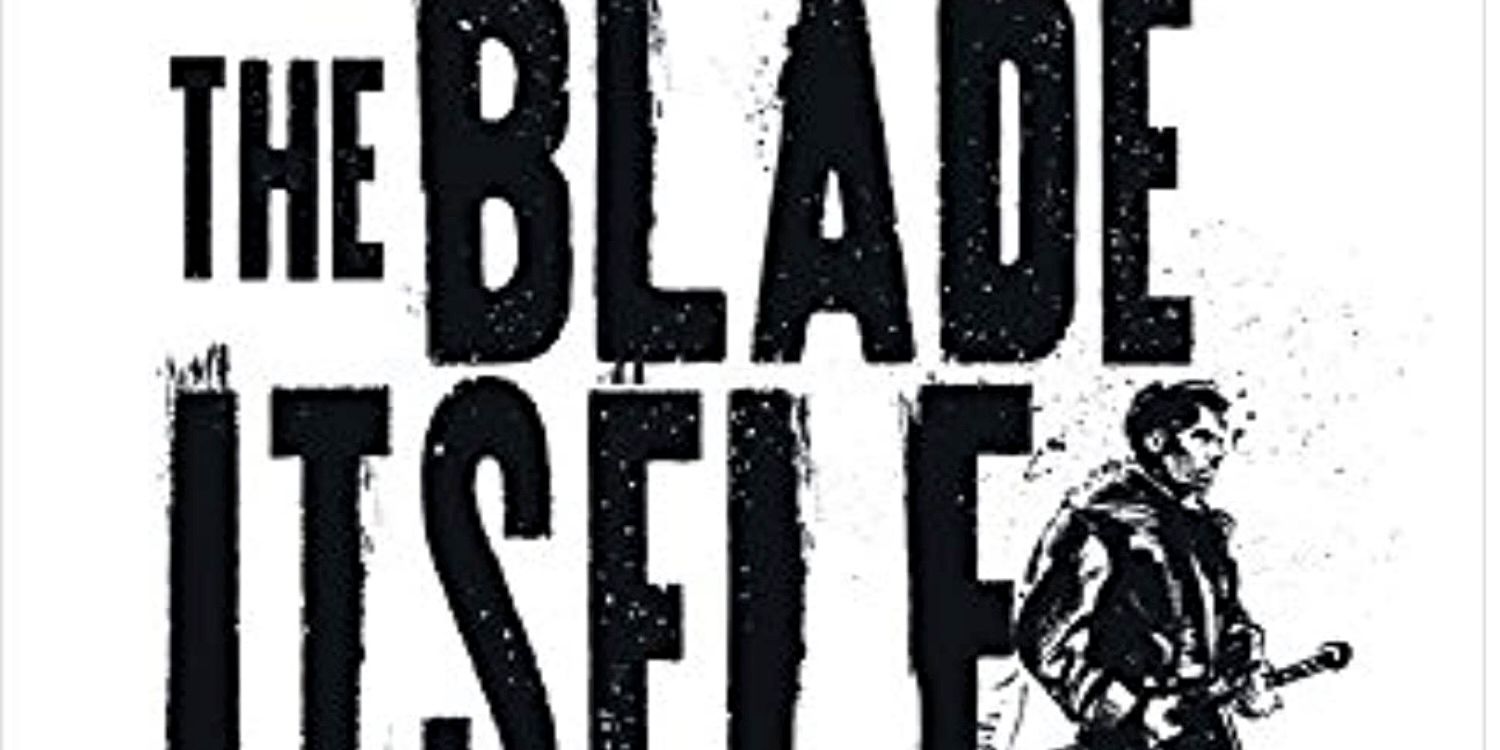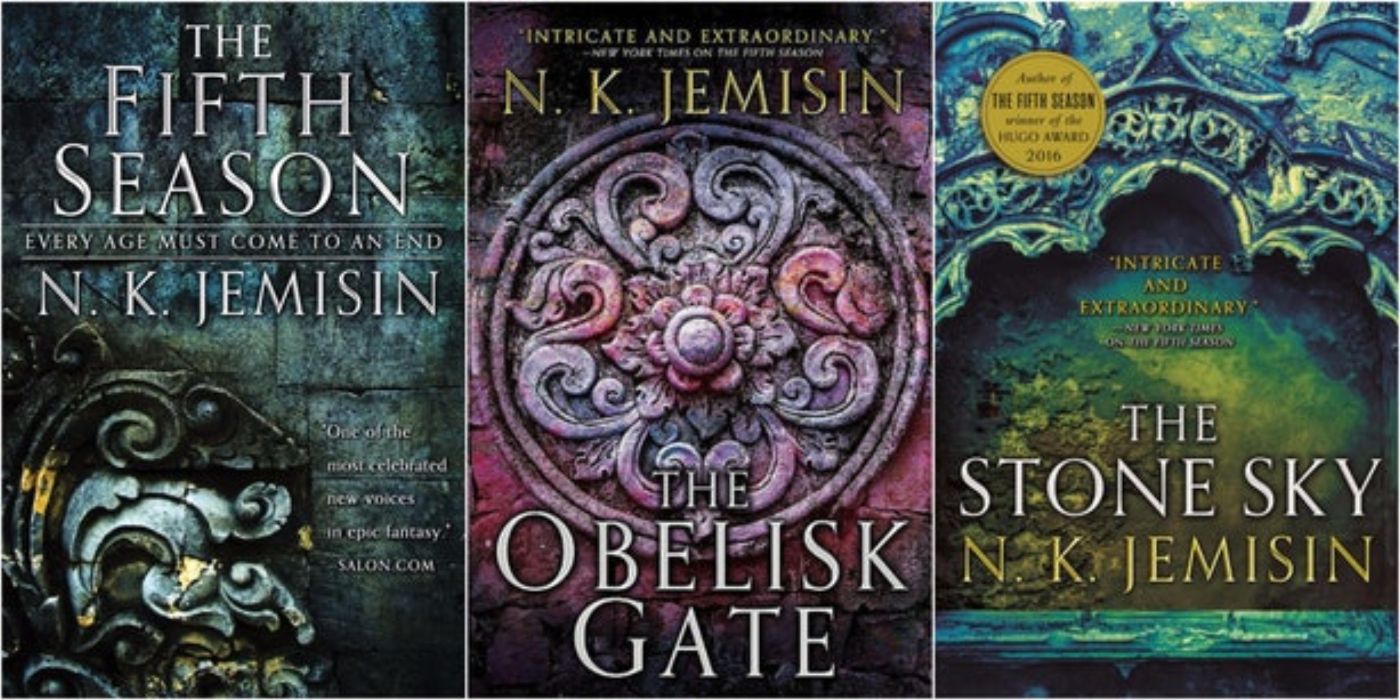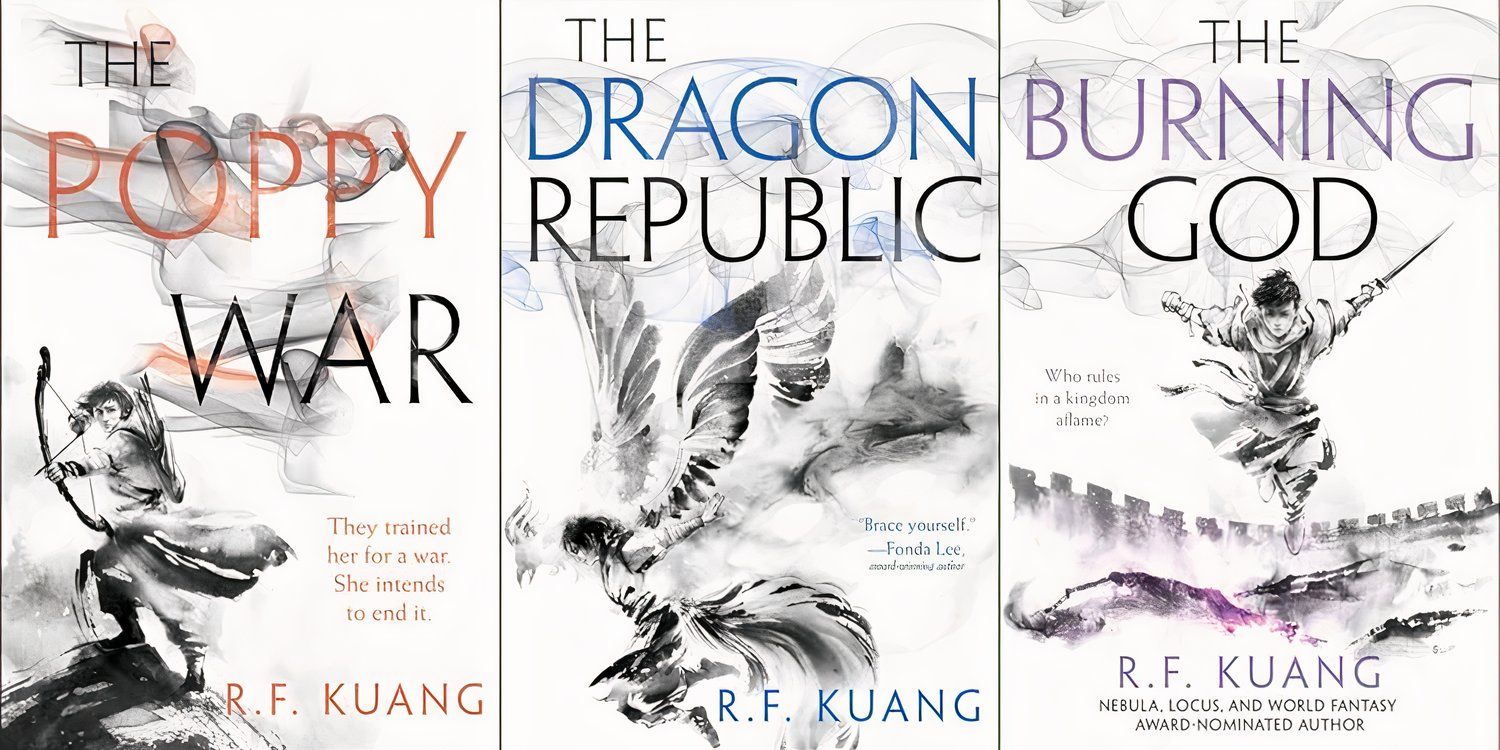Summary
- Fantasy novels often require heavy exposition in the beginning to introduce new universes and complex systems.
- Well-written fantasy series provide an enormous payoff and engaging experience for readers in rich, expansive worlds.
- From unique perspectives to intricate worldbuilding, fantasy series like The Broken Earth and The Poppy War push boundaries.
While most book genres include worldbuilding and complex storytelling, fantasy particularly lends itself to writing that pushes the boundaries of what’s possible in the literary world. When it comes to fantasy and sci-fi, to a certain extent, often an entirely new universe must be created from scratch by the author. This style means that the early parts of a fantasy series will be heavy with exposition. In addition, there will be dialogue explaining how the culture, magic systems, and political machine work. If the author is skilled, there will also be character-building and compelling incidents to keep the reader engaged.
When a fantasy series is written well, it should create an enormous payoff for the audience and an enjoyable experience reading the stories.
There are many fantasy book series that never get old, but for some longer and more dense novels, reading them once is enough. This is typically the case with book universes that span decades and begin to reach double digits. It’s undeniable that the early slough of reading fantasy isn’t for every reader, but when the story clicks for the audience and the world is fully understood, there’s nothing more satisfying. When a fantasy series is written well, it should create an enormous payoff for the audience and an enjoyable experience reading the stories.
Related
8 Books That Perfectly Blend Fantasy & Sci-Fi
The sci-fi and fantasy genres frequently go hand in hand, but only a few books blend them so well that the line between story types is blurred.
10 The Stormlight Archive (2010–Present)
Written by Brandon Sanderson
The Stormlight Archive is so prolific that it includes some of Brandon Sanderson’s best books, as Sanderson is one of the most consistent fantasy writers of the contemporary era. Although The Stormlight Archive is yet to be completed, Sanderson has been working diligently to complete his original plan for the series since its inception in 2010 with The Way of Kings. However, Sanderson’s other popular works have often gotten in the way of the series’ completion. Despite this, it can’t be argued that Sanderson hasn’t outdone himself with The Stormlight Archive.
Like much of Sanderson’s work,
The Stormlight Archive
is long and is no beach read.
The Way of Kings could be criticized for how much time it spends on exposition, but without this, the following novels wouldn’t be as compelling or make as much sense. Like much of Sanderson’s work, The Stormlight Archive is long and is no beach read. However, once the reader becomes attached to the characters, it’s impossible to put down. From the epic battle sequences to the moments of comedic relief, there’s no corner of fantasy that The Stormlight Archive leaves unexplored.
9 The Realm Of The Elderlings (1995–2017)
Written by Robin Hobb
The Realm of the Elderlings was released over several decades, but it’s more of an all-encompassing universe rather than a single storyline. It’s comprised of several trilogies and smaller series that all take place in the same world and have similar themes. However, there are characters and conflicts that appear in multiple editions of the overarching series, which give the audience the sense that everything’s connected. There are also shorter novellas that look deeply into specific aspects of worldbuilding for readers who are interested in this aspect.
Though there is some debate about how to best read The Realm of the Elderlings, the most straightforward way to approach Robin Hobb’s epic series is to start from the beginning. Going from the earliest publication date to the most recent gives the reader a sense of how Hobb imagined the story and is simple to follow. However, it’s also possible to start The Realm of the Elderlings at any point in the universe, as long as it’s the beginning of a discreet trilogy or series. In this way, despite its length, The Realm of Elderlings is fairly user-friendly.
8 Malazan Book Of The Fallen (1999–2011)
Written by Steven Erikson
There’s no one particular character or time that can define the
Malazan Book of the Fallen
, as the series spans thousands of years and incorporates the stories of many characters.
With a total of ten volumes in the main series, it’s easy to get lost in Steven Erikson’s Malazan Book of the Fallen books, which began with Gardens of the Moon in 1999. There’s no one particular character or time that can define the Malazan Book of the Fallen, as the series spans thousands of years and incorporates the stories of many characters. The novel incorporates many of the traditional structures of fantasy, like magic and warfare, and is clearly inspired by the great works of high fantasy, like J.R.R. Tolkien’s Lord of the Rings.
The companion books, The Novels of the Malazan Empire series, were written by Erikson’s collaborator, Ian C. Esslemont, and are part of the series’ canon. Erikson also wrote The Kharkanas Trilogy, which takes place before the events of the Malazan Book of the Fallen. Despite there being plenty of additional material, the best way to begin is by reading the first ten books in order and then exploring the universe more fully. It might take more than one read-through to glean everything from the series, but even the most basic elements of the story are thrilling.
7 The Bone Season (2013–Present)
Written by Samantha Shannon
Though she’s best known for her epic work, The Priory of the Orange Tree, Samantha Shannon began her journey into rich and complex fantasy long before the landmark novel. Her earlier series, The Bone Season, is just as incredible and well-realized as The Priory of the Orange Tree and should get the recognition it deserves. The series is ongoing and follows the story of Paige Mahoney, a young woman who’s clairvoyant in a world where people like her are persecuted to the point of extinction. However, this is only the beginning of her journey.
The Bone Season is often compared to other works of fantasy that involve chosen-one narratives and dystopian elements, but the series is something completely unique. The series is expected to conclude with the seventh novel, and interest in Paige and her story has never slowed or grown stale throughout the waiting time between new installments. With each book, The Bone Season grows more intricate and expansive than the first novel would have the audience believe, drawing them in deeper with every page.
6 The Wheel Of Time (1990–2013)
Written by Robert Jordan
Recently, The Wheel of Time has taken fantasy television by storm, with two seasons available to watch on Amazon Prime. It’s safe to say that there will be no shortage of material for the show to draw from. Robert Jordan’s series includes fourteen novels and one prequel for a total of fifteen books, all with their own individual thrusts and plots. Though Jordan passed away before the final books were written, Brandon Sanderson helped complete the last few installments with help from Jordan’s notes and the plot threads already laid in previous novels.
There’s no question that reading
The Wheel of Time
is an undertaking, but it’s the kind of fantasy story that you never want to end.
Many individuals pop in and out of The Wheel of Time books, and it’s exciting to contemplate what characters will return for The Wheel of Time season 3. It’s difficult to read The Wheel of Time and keep up with the many narratives and characters that are each uniquely developed and realized. However, it’s even more impressive to contemplate that Jordan kept all of these elements balanced in his mind while writing the works. There’s no question that reading The Wheel of Time is an undertaking, but it’s the kind of fantasy story that you never want to end.
5 Avalon (1982–2000)
Written by Marion Zimmer Bradley
When it comes to adaptations of the iconic legend of Camelot, almost every King Arthur movie focuses on Arthur, his knights, or some other man that populates the story. However, Marion Zimmer Bradley changed this in the literary sphere with the Avalon series. She retold the myth of King Arthur from the perspective of the women in the story, beginning with Morgaine in The Mists of Avalon. Morgaine is typically portrayed as an evil sorcerer who plays a major role in Arthur’s undoing, but The Mists of Avalon see her as much more than this.
Today, modern retelling of myths from a female perspective has never been more popular, especially in the realm of Greek mythology. However, the Avalon series was at the forefront of this trend in the 1980s and cannot be overlooked in the impact it had on feminist literature. The Avalon novels are also in deep conversation with religion and spirituality, particularly neo-Paganism. Though learning about religious practices can be a lot of new information for audiences, understanding this aspect of the books is vital to understanding the characters.
4 The First Law (2006–2008)
Written by Joe Abercrombie
Abercrombie successfully sets the story in a world not unlike our own but with significant enough changes that the audience is transported somewhere new.
Beginning with The Blade Itself, The First Law trilogy was what kicked off Joe Abercrombie’s career and highlighted him as an author to watch in fantasy. From the start, Abercrombie balances many characters within his twisting world, challenging the reader to keep up and pay attention to the subtle clues and nuances of the story. It’s a darker fantasy series that breaks out of the pitfalls that can bog down new fantasy authors. Additionally, Abercrombie successfully sets the story in a world not unlike our own but with significant enough changes that the audience is transported somewhere new.
Though The First Law trilogy is a series unto itself, there are a few standalone novels set in the universe, as well as The Age of Madness trilogy, which is loosely connected to the original books. The First Law books came at the perfect time when readers were asking their fantasy to be gorier and to include aspects of additional genres. Juggling the characters and their many devious plots can be difficult when first picking up The First Law, but it’s well worth it to see where their scheming gets them.
3 The Broken Earth (2015–2017)
Written by N.K. Jemisin
It’s easy to see the real world reflected in The Broken Earth trilogy, as the catastrophic fifth season the characters face is reminiscent of the climate disasters happening around the world. The unique twist in the first book, The Fifth Season, is one of the best payoffs of the series, but the remaining two books still hold just as many secrets. It’s the twist that immediately sets apart The Broken Earth as something different amidst the wide array of offerings in the fantasy dystopian genre. N.K. Jemisin creates a complicated universe, but it’s one the audience can handle.
The thematic overtones of the story are seamlessly woven throughout the narrative, and this encourages the reader to think deeply about the hidden meanings layered within the narrative. The Broken Earth trilogy is a great example of where fantasy is going and how high fantasy can still be grounded and relatable for a reader. Jemisin won the Hugo Award for each book in The Broken Earth trilogy, demonstrating how there is no dip in quality or excitement as the novels progress.
2 The Poppy War (2018–2020)
Written by R.F. Kuang
The last few years have seen R.F. Kuang try her hand at many different genres and receive acclaim and success in all of them. However, her earliest series, The Poppy War, still stands out as a masterclass in fantasy and worldbuilding, as well as historical and cultural commentary. The fictional world The Poppy War is set in holds magic, dragons, and gods. However, it’s irrevocably tied to the history of China, which Kuang drew from as an influence for the societal structures and international conflicts that color the novel’s story.
She’s stubborn and imperfect but relentlessly compelling and relatable to the audience, who is just as lost in this world of gods and monsters as she is.
In this way, much of The Poppy War subtly teaches the reader about a pivotal period of history. What keeps the reader grounded throughout the trilogy is the protagonist, Rin. She’s stubborn and imperfect but relentlessly compelling and relatable to the audience, who is just as lost in this world of gods and monsters as she is. Rin and her closest confidants are fully realized and nuanced characters that ensure the reader is never alienated by the wealth of information they take in in every chapter.
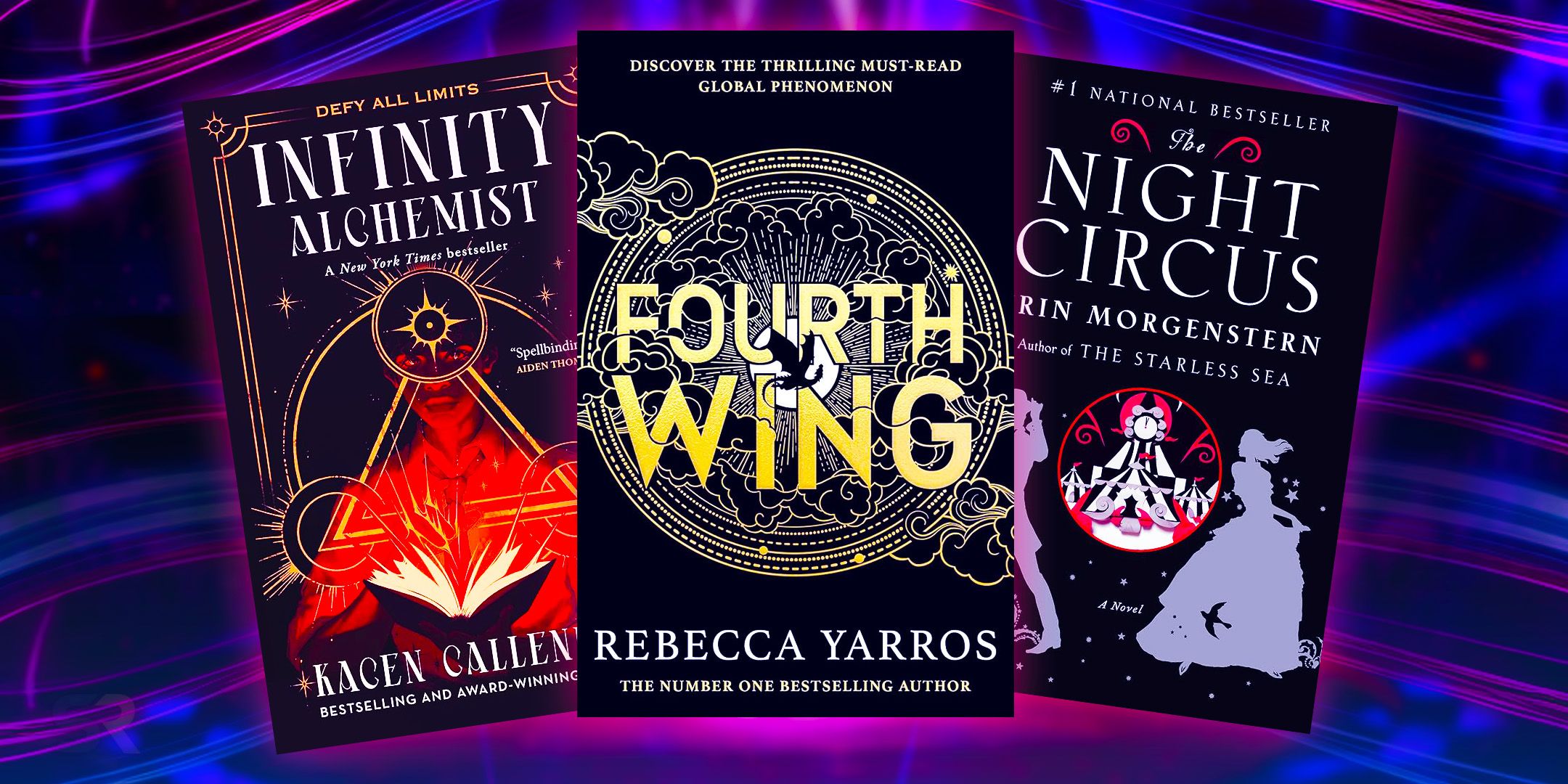
Related
10 Books That Perfectly Blend Fantasy & Romance
While the draw of fantasy books is the worldbuilding & magic, the plots within these novels are elevated by great romances & love stories.
1 A Song Of Ice And Fire (1996–Present)
Written by George R.R. Martin
There’s still a good chance that George R.R. Martin will return to A Song of Ice and Fire and give it an alternate ending to the polarizing finale of Game of Thrones. So far, Martin has only completed the first five books in the series, beginning with A Game of Thrones in 1996. This means the TV series had to extrapolate what would happen next in the plot based on Martin’s existing work. Hopefully, Martin won’t be swayed by how writers and showrunners concluded the story, as Game of Thrones season 8 is considered the worst of the entire show.
Like most high fantasy novel series, A Song of Ice and Fire is a marathon, not a sprint. Martin spends long passages discussing the intricacies of the houses, their sworn men, and how they all connect. It’s immersive but a touch dense for new readers unfamiliar with the style. However, it doesn’t get wrapped up in the plot, as from the first chapters, it’s impossible to envision the explosive results of the interconnected storylines finally weaving together. The next book, The Winds of Winter, will surely make good on Martin’s promise to continue the series on a high note.




